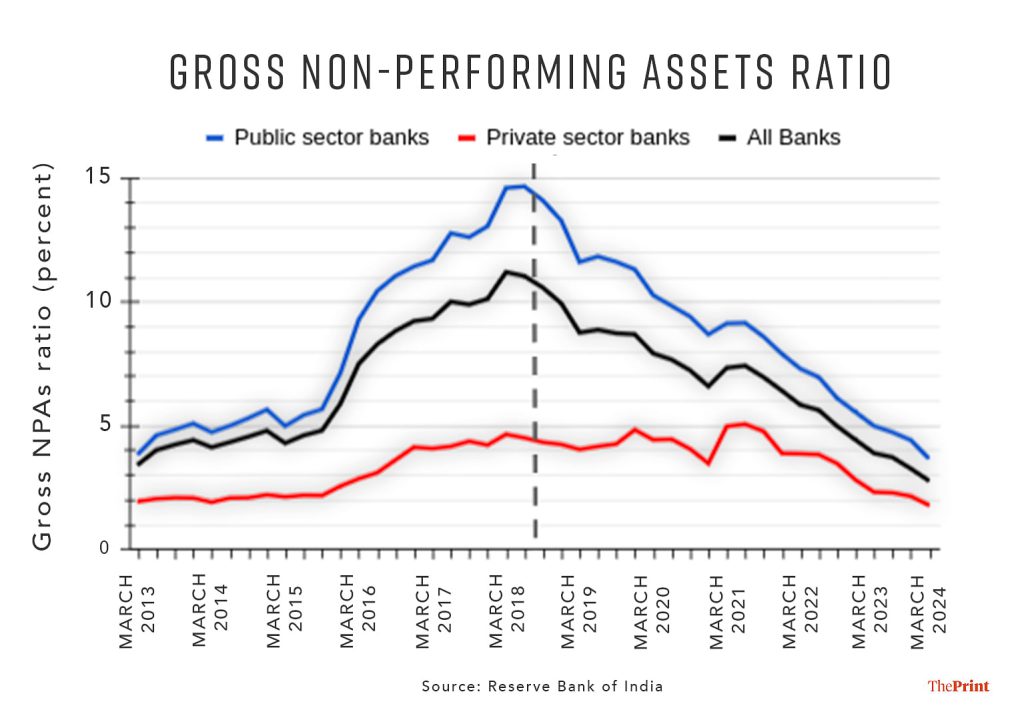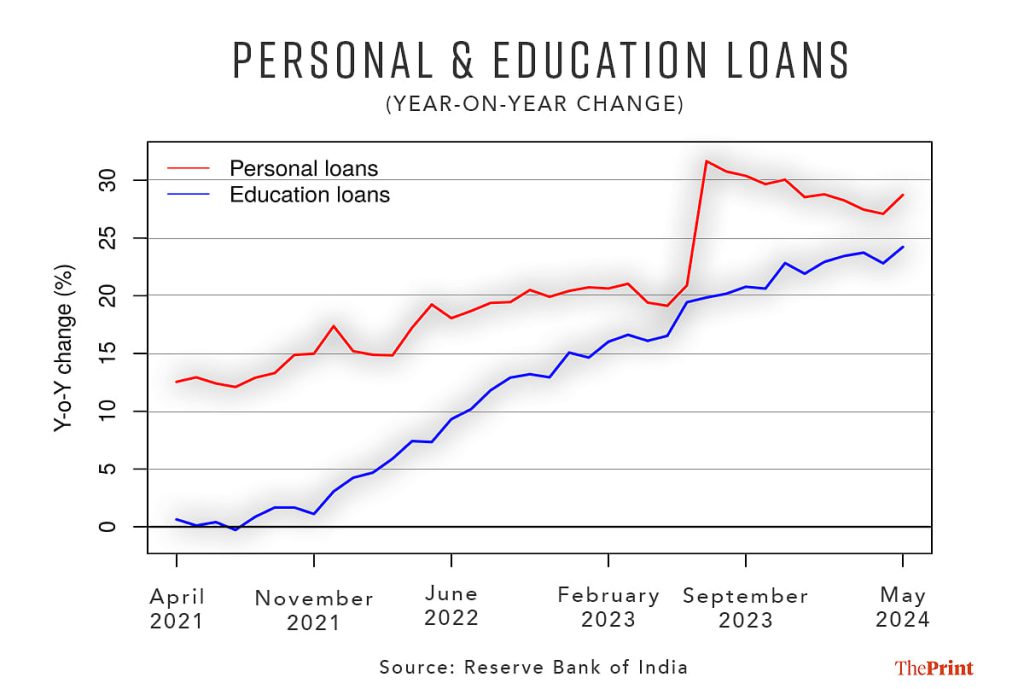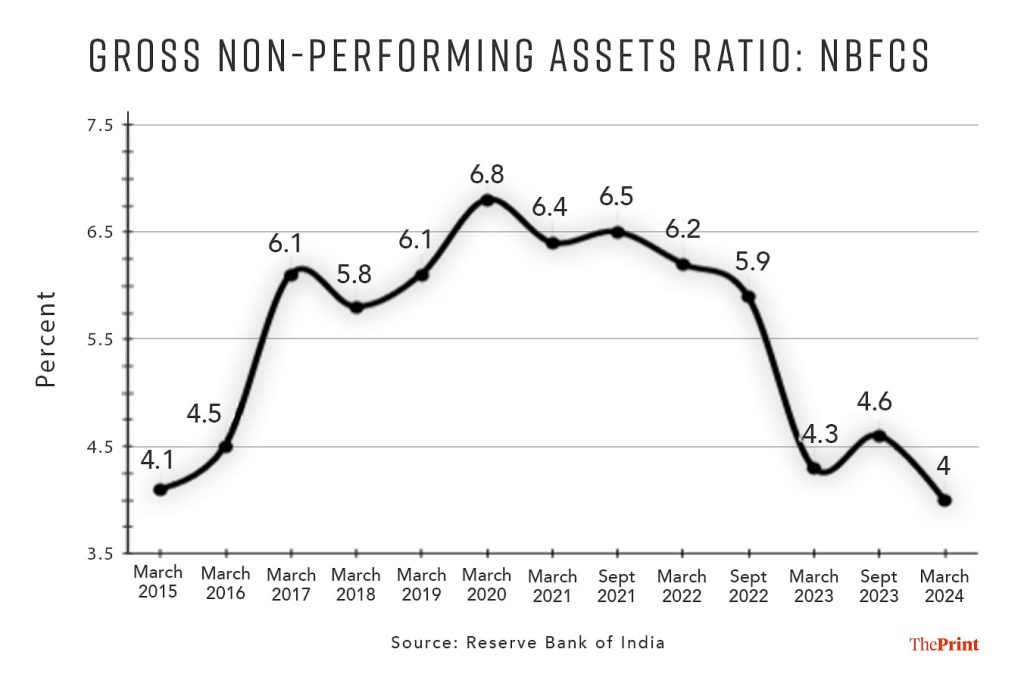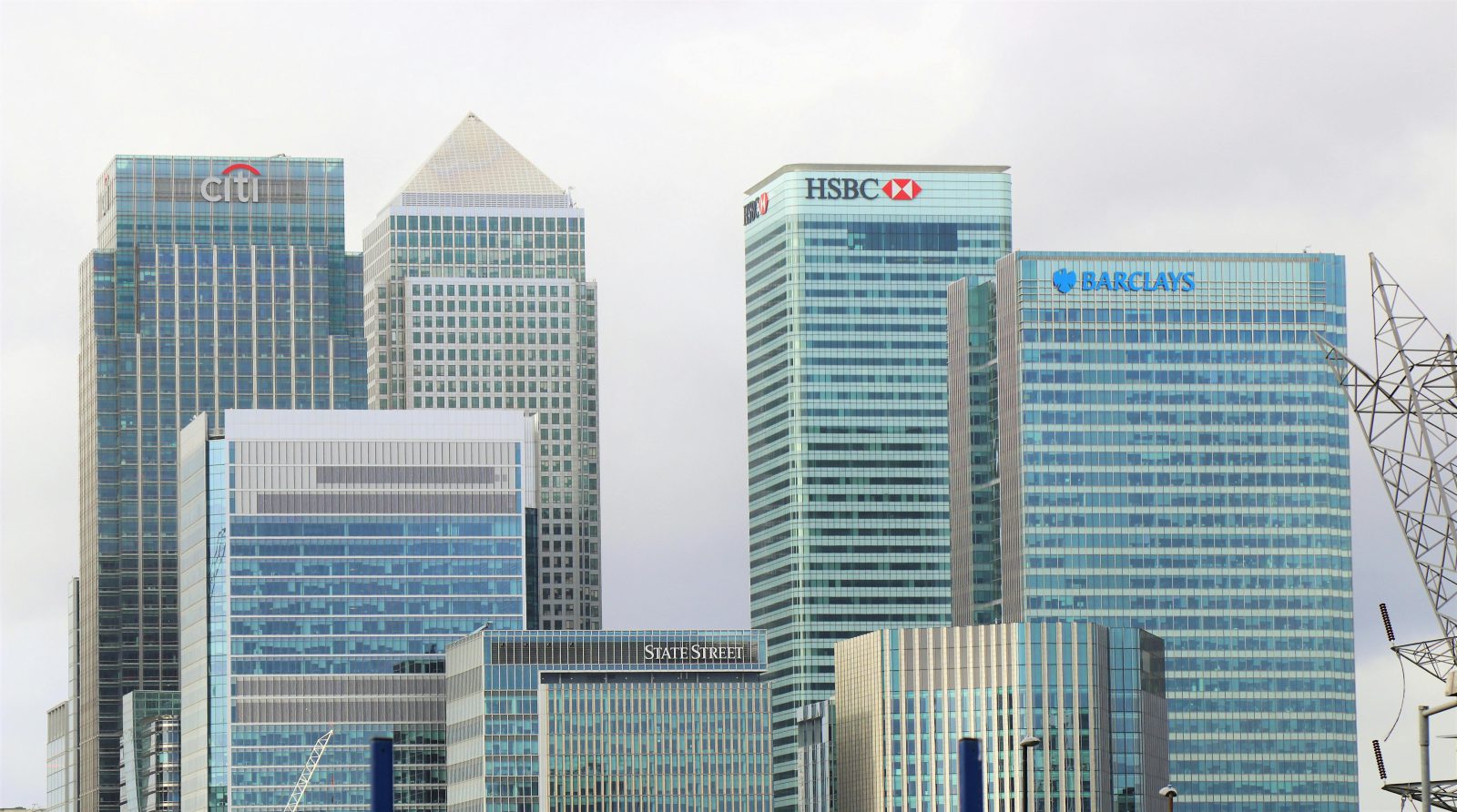The Reserve Bank of India’s latest Financial Stability Report shows steady improvement in bank balance sheets, with the non-performing asset ratio at a multi-year low, well-placed capital reserves and strong earnings. Given that India’s financial system is dominated by banks, the overall sound health of the banking sector is good news for financial stability, but the report points to some areas of concern that require closer scrutiny.
Bad loans in the education segment, increased slippages from retail loans by private banks, and the inter-linkage between NBFCs and banks, need to be monitored. The risk associated with climate change is emerging as a key source of concern from a financial stability perspective.
NPL ratio at multi-year low
A key point of the two-year assessment of financial stability has been the steady upward trend in the quality of commercial banks’ assets.
The banks’ gross non-performing assets (GNPA) ratio fell to a 12-year low of 2.8 percent at the end of March 2024 from 3.2 percent in September last year. The net non-performing asset (NNPA) ratio fell to 0.6 percent from 0.9 percent during the same period. Banks’ GNPA ratio is expected to further improve to 2.5 percent by March 2025 under the baseline scenario.

The decline in bad loans has been driven by a combination of loan write-offs as well as a reduction in new bad loans. Encouragingly, the six-month slippage ratio (new NPA additions as part of standard advances) declined across all banking groups.
Public sector banks, which were plagued by a high percentage of bad loans a few years ago, recorded a significant reduction of 76 per cent in their GNPA ratio in the second half of 2023-24. Sector-wise, there has been a broad reduction in NPAs. However, the GNPA ratio in agriculture still remains high at 6.2 percent.
Personal loans: NPAs lower but signs of stress emerging
In the category of personal loans, surprisingly, the highest non-payment was observed in the education segment, while the lowest is that of housing. GNPA on personal loans for education was 3.6 percent, compared to 1.8 percent for credit cards, 1.1 percent for housing loans and 1.3 percent for vehicle loans.
While the weight of education loans in the overall segment of personal loans is small, these loans have grown at a fast pace. After the lull caused by the pandemic, there has been an increase in the number of students choosing to study abroad. Course fees have also increased, contributing to increased demand for education loans, but lack of job opportunities, layoffs and hiring freezes may be responsible for the increase in bad loans in this segment.
To be sure, education loans do not account for a large portion of bad loans, but major slippages in this segment could be a cause for concern, especially for public sector banks, where the share of NPAs in education loans is 3.9 percent.

Slippages or net additions to bad loans in the retail segment (excluding housing loans) is another area that requires monitoring. While the stock of NPAs in retail loans fell to 1.2 per cent in March 2024 from 2.1 per cent in June 2022, in the case of private banks, slippages from retail loans accounted for 40 per cent of new additions to bad loans.
Capital Position: Comfortable but moderate in private bank capital
The capital to risk-weighted asset ratio (CRAR) of public sector banks increased from September 2023, but private and foreign banks saw a moderation in their CRAR. These banks had higher percentages of loans that were subject to enhanced regulatory scrutiny in November 2023.
To curb the rise in unsecured personal loans, credit cards and loans to NBFCs, the RBI had increased the risk weights for such loans. Consequently, risk-weighted assets grew at a faster pace, compared to the growth of total capital, resulting in a moderation of the ratio of capital to risk-weighted assets in the second half of last year.
Despite a moderation in CRAR, Indian banks have sufficient capital buffers to handle stress. Stress tests by the RBI show that even in a severe stress scenario, banks’ capital will remain above the minimum capital requirement of 9 percent.
Exposure of banks to NBFCs
Non-bank financial companies, known for targeting specific loan segments, also saw a downward movement in their non-performing asset ratio to 4 percent in March 2024 from 4.6 percent in September 2023.
While there was a broad-based decline in the GNPA ratio across sectors, the auto loan segment had the highest ratio among the retail segment. Since NBFCs are prone to asset-liability mismatches, it is imperative to review metrics related to the asset and liability profile of NBFCs.
These metrics also portray the sound financial health of NBFCs. For example, the share of commercial paper (short-term loans) in total assets fell to less than 2 percent, long-term assets accounted for 65 percent of total assets, and short-term liabilities remained below 25 percent of total assets at the end of March. . 2024.

Like previous reports, there are concerns about the inter-linkage between banks and NBFCs, and the potential spread of risks from NBFCs to banks. The report shows that the NBFC segment has emerged as the largest net borrower of funds from the financial system.
Their gross payables of Rs 16.58 lakh crore far exceed their gross receivables of Rs 1.61 lakh crore. Most of the payables constitute long-term financing from banks. Housing finance companies are also big borrowers from banks. With substantial funding from banks, the failure of any NBFC or housing finance company could have an adverse effect on the banks.
Geopolitical risks have decreased, but new sources of risks are emerging
RBI’s Systemic Risk Survey provides a comprehensive account of the various sources of risks to the Indian financial system. The findings show that risks from geopolitical disruptions have moderated, but domestically, risks from climate change and consumer demand have emerged as some of the main sources of risk for the Indian financial system.
For risks related to climate change, a whole program of work will be needed to assess the materiality of the risks, assess the impact and identify strategic responses.
Radhika Pandey is an Associate Professor at the National Institute of Public Finance and Policy (NIPFP).
Views are personal.
Image Source : theprint.in, https://www.pexels.com/







Leave a Reply